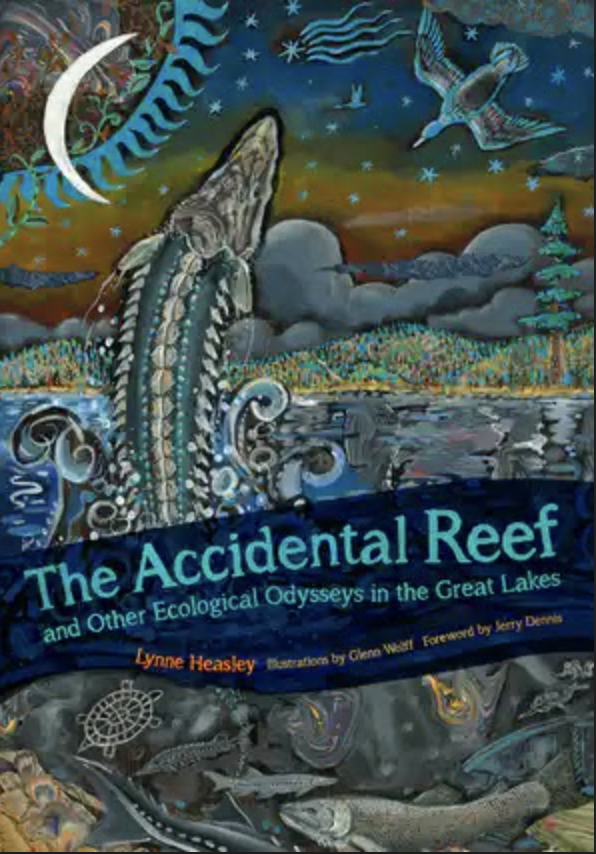By GABRIELLE AHLBORN
Capital News Service
LANSING – When people see a Great Lake for the first time, they’re amazed by its oceanlike expanse of freshwater that reaches beyond the horizon.
Yet why are there relatively few books about the Great Lakes?
“Think of colonial New England, the American West, the American South – each with a vast literary tradition,” said Lynne Heasley, the author of “The Accidental Reef and Other Ecological Odysseys in the Great Lakes” (Michigan State University Press, $27.95).
Heasley said, “The Great Lakes haven’t come close to that level of literary or historical attention.”
Heasley, a professor of environment and sustainability at Western Michigan University, wrote the recently published book to direct attention to the wonders of the Great Lakes. She is also the author of “A Thousand Pieces of Paradise: Landscape and Property in the Kickapoo Valley.”

ACCIDENTAL REEF PHOTO
Professor Lynne Heasley wrote a book about the Great Lakes, hoping to fill a literary gap about the lakes“The Accidental Reef” features the ecological, historical and commercial aspects of the waters and surrounding areas. The title originates from an accident of industrial history.
“A steamship dumped coal waste in the St. Clair River near Algonac, which became a spawning site for lake sturgeon,” Heasley said. “The same U.S.-Canadian area of waterways was where zebra mussels first got established. Such unexpected convergences launch many ecological odysseys.”
The book explores the interconnected layers of the Great Lakes, from the leadership of local native tribes to the concerning intensity of resource extraction.
“I hope readers will be amazed, and sometimes horrified, at the intricate relationships we’re all part of but can’t always see,” Heasley said.
It took several years to write the book and to fully and accurately capture a cohesive picture of the Great Lakes and their histories, she said.
“Getting my arms around the evolutionary history of zebra mussels was hard,” Heasley said. “Thank goodness for a few scientist friends who held my dainty hand through that chapter.”
Heasley said her favorite part of the book was working with the most complex stories.
She said readers should be drawn to divers and the lake sturgeon they collaborate with. They discovered a spawning site in unprecedented numbers, described by Heasley as an “ecological Atlantis.”
Heasley plans to expand her Great Lakes collection in the coming years.
“I’ve begun another presumably years-long project on three extraordinary Great Lakes landforms: alvar grasslands, the St. Clair River delta and coastal freshwater sand dunes,” she said.
Heasley encourages readers to become involved in Great Lakes education and stewardship.
“Our Great Lakes are home, community, identity,” Heasley said. “They’re waters and habitats that need love and care, whether that’s expressed through diplomacy, policy, law, restoration or activism.”
Gabrielle Ahlborn writes for Great Lakes Echo.